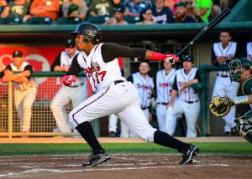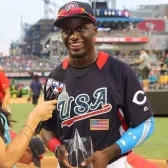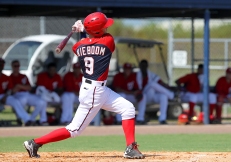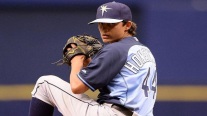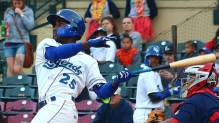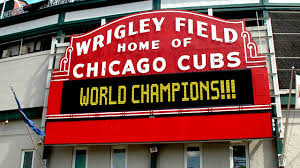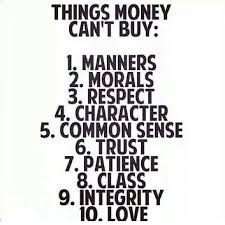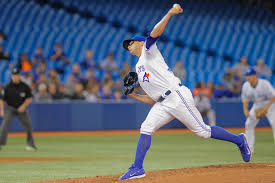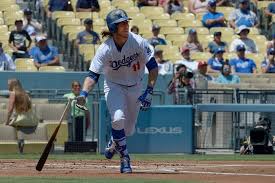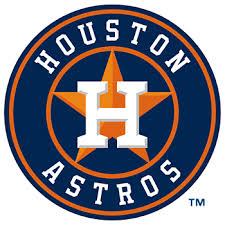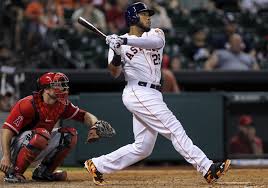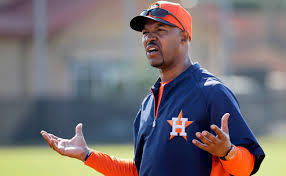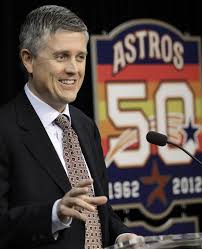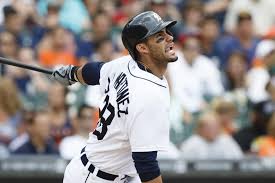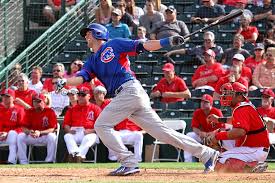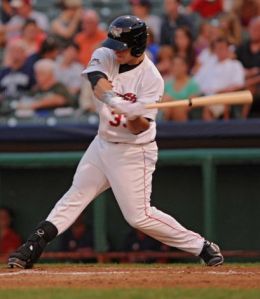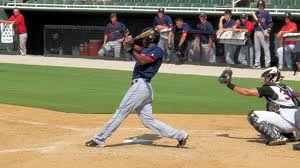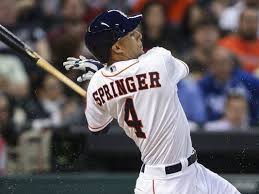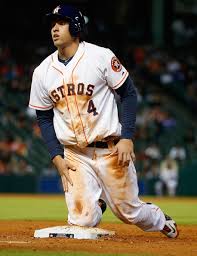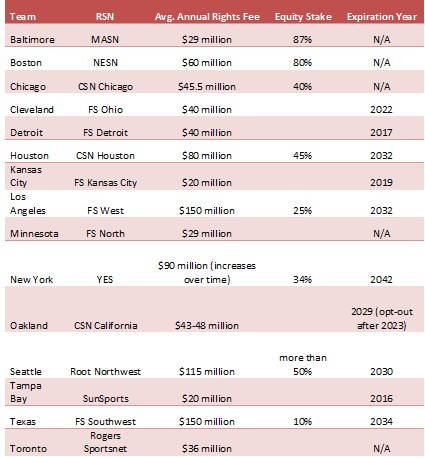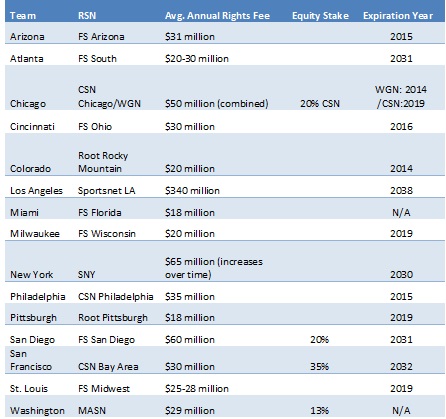It certainly hasn’t taken long for teams to begin dishing out large contracts that they’ll probably regret in a couple of years with free agency well under way. However, the last 24 to 48 hours have supplied the greatest number of gifts, with a lot of examples of “huh”, “why”, “seriously”, and “come again” worthy reactions.
The Trades
Detroit Tigers get: 2B Steve Lombardozzi, LHP Ian Krol, and LHP Robbie Ray
Washington Nationals get: RHP Doug Fister
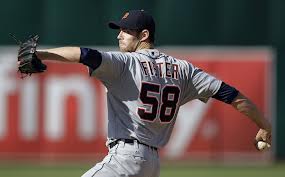 It has to be called the Doug Fister trade because no one really cares about any of the players that the Tigers got back, right? If this wasn’t a total salary dump, I don’t know what it was, as the “prize” return for the Tigers is Ray, who was a 10th round pick in 2010 and had a 6.56 ERA in 2012 in his first attempt at High-A Potomac before bouncing back and having a solid season between High-A and Double-A in 2013, really doesn’t seem like a tremendous prospect; though, we have been proven wrong by Dave Dombrowski before. After the Tampa Bay Rays received one of the top young prospects in baseball, Wil Myers, in return for two controllable seasons of James Shields, you would think that the Tigers could have received more for Fister, who had managed to post an impressive 32-20 record to go along with a 3.29 ERA and 1.19 WHIP in 440.2 innings with Detroit. Fister now joins Stephen Strasburg, Jordan Zimmerman, and Gio Gonzalez within the Washington rotation, making the Nationals strong contenders for first-year manager Matt Williams in 2014.
It has to be called the Doug Fister trade because no one really cares about any of the players that the Tigers got back, right? If this wasn’t a total salary dump, I don’t know what it was, as the “prize” return for the Tigers is Ray, who was a 10th round pick in 2010 and had a 6.56 ERA in 2012 in his first attempt at High-A Potomac before bouncing back and having a solid season between High-A and Double-A in 2013, really doesn’t seem like a tremendous prospect; though, we have been proven wrong by Dave Dombrowski before. After the Tampa Bay Rays received one of the top young prospects in baseball, Wil Myers, in return for two controllable seasons of James Shields, you would think that the Tigers could have received more for Fister, who had managed to post an impressive 32-20 record to go along with a 3.29 ERA and 1.19 WHIP in 440.2 innings with Detroit. Fister now joins Stephen Strasburg, Jordan Zimmerman, and Gio Gonzalez within the Washington rotation, making the Nationals strong contenders for first-year manager Matt Williams in 2014.
Winner: Washington Nationals.
Smelling Fowler
Houston Astros get: CF Dexter Fowler
Colorado Rockies get: RHP Jordan Lyles and OF Brandon Barnes
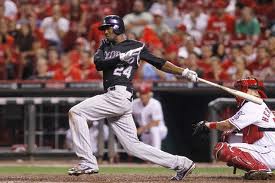 Fowler seemed to be on the trading block for some time, but he was finally dealt on Tuesday. The Astros get two affordable seasons (two-years, $11.6 million) of Fowler while they wait for George Springer to prove himself ready, or…they just acquired a nicer trade chip than what they gave up. Jordan Lyles may still be just 23 years old, but he hasn’t put it together in 377 major league innings, posting a 5.35 ERA, 1.45 WHIP, and a 6.2 K/9, and it seems very unlikely that shifting to Coor’s Field is going to assist his progression to sudden success. Brandon Barnes has some ability, but it isn’t as an everyday player, as his atrocious 127:21 K:BB and .635 OPS over 445 plate appearances goes to show. Barnes could be a fourth outfielder for the Rockies, with Carlos Gonzalez sliding over to center and Charlie Blackmon and Corey Dickerson battling it out for the left field job, or Colorado could look to free agency to upgrade in center. This deal didn’t make a whole lot of sense for the Rockies unless they saw something in Lyles and didn’t feel that Fowler would ever live up to his hot start from 2013, when he posted a 1.032 OPS and then fell off of the face of the earth. Even if Fowler doesn’t live up to those numbers, he is the most valuable piece in the deal.
Fowler seemed to be on the trading block for some time, but he was finally dealt on Tuesday. The Astros get two affordable seasons (two-years, $11.6 million) of Fowler while they wait for George Springer to prove himself ready, or…they just acquired a nicer trade chip than what they gave up. Jordan Lyles may still be just 23 years old, but he hasn’t put it together in 377 major league innings, posting a 5.35 ERA, 1.45 WHIP, and a 6.2 K/9, and it seems very unlikely that shifting to Coor’s Field is going to assist his progression to sudden success. Brandon Barnes has some ability, but it isn’t as an everyday player, as his atrocious 127:21 K:BB and .635 OPS over 445 plate appearances goes to show. Barnes could be a fourth outfielder for the Rockies, with Carlos Gonzalez sliding over to center and Charlie Blackmon and Corey Dickerson battling it out for the left field job, or Colorado could look to free agency to upgrade in center. This deal didn’t make a whole lot of sense for the Rockies unless they saw something in Lyles and didn’t feel that Fowler would ever live up to his hot start from 2013, when he posted a 1.032 OPS and then fell off of the face of the earth. Even if Fowler doesn’t live up to those numbers, he is the most valuable piece in the deal.
Winner: Houston Astros.
The Unimpressive Three-Way
Cincinnati Reds get: LHP David Holmberg.
Tampa Bay Rays get: RHP Heath Bell and cash from Arizona, and C Ryan Hanigan from Cincinnati.
Arizona Diamondbacks get: RHP Justin Choate and a PTBNL
The Rays are always viewed as a smart club and they were able to land another potential closer after losing Fernando Rodney to free agency, leaving the club with Heath Bell and Juan Carlos Oviedo to battle it out for the gig. On top of that, they received an excellent framing catcher in Hanigan, who has proved to be quite valuable to Cincinnati over the last several years in game-calling, while inking the backstop to a three-year extension upon the completion of the deal. The bad part, though, is that both Bell and Hanigan weren’t very good last season, with Hanigan, in particular, looking like a nightmare offensively, posting a .198/.306/.261 line over 260 plate appearances, leading to the Reds leaning on Brayan Pena, who was signed to a two-year deal earlier this winter, and Devin Mesoraco, the young, power-hitting catcher who will finally get a full-time look in Cincinnati. The Diamondbacks dumped some salary while dealing Bell for a young, breathing body. Choate pitched in the New York-Penn League in 2013 at the age of 22 and he isn’t much of a prospect. The Reds dumped Hanigan, who was arbitration-eligible, while getting a 22-year-old left-handed starter, who posted a 2.75 ERA in 26 Double-A starts in 2013 with a 116:50 K:BB in 157.1 innings. While Holmberg wasn’t as sexy as Tyler Skaggs or Archie Bradley within the Diamondbacks system, he could become a solid back of the rotation arm or a Sean Marshall-like relief pitcher for the Reds. The good news for Cincinnati is that Mesoraco gets his shot and Holmberg adds some near-ready pitching depth after the likely departure of Bronson Arroyo via free agency.
Winner: Everyone looks like a winner here, as the deal worked well for all three teams, but the Rays received the most help in assisting the team win in 2013.
Why Did Beane Make That (Michael) Choice?
Texas Rangers get: OF Michael Choice and 2B Chris Bostick
Oakland A’s get: OF Craig Gentry and RHP Josh Lindblom
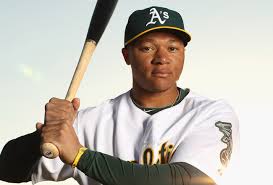 This seemed like an odd deal for Oakland and GM Billy Beane, as Gentry is arbitration-eligible for the first time this winter and Lindblom has been pretty terrible since being traded from the Dodgers to the Phillies in the 2012 Shane Victorino deal, as he has posted a 5.10 ERA and 1.50 WHIP over 54.2 innings since leaving Los Angeles (2.91 ERA and 1.18 WHIP in 77.1 innings prior to the trade). Maybe a return to the west coast is what Lindblom needs to be a useful reliever, but by getting the elite defensive skills and increasing salary of the light-hitting (.280/.355/.366 in 763 plate appearances), 29-year-old Gentry, and giving up the potential that still exists in the bat of Michael Choice, who is 24 and isn’t arbitration-eligible until 2017, Beane showed that he may be looking beyond three years from now and that he could be putting the A’s in win-now mode. Bostick is a nice second base prospect, having posted a .282/.354/.452 line over 555 plate appearances as a 20-year-old in Low-A in 2013, but the Rangers have quite a few young, up-the-middle prospects (Rougned Odor, Jurickson Profar, and Luis Sardinas) and they don’t seem to have a need there, while the A’s have run Jemile Weeks out of town in a trade with Baltimore and Eric Sogard was very…meh…in 2013 at the major league level. Winning now is important, but it doesn’t seem like the A’s really acquired anyone who can really help them in 2014 to get over the hump.
This seemed like an odd deal for Oakland and GM Billy Beane, as Gentry is arbitration-eligible for the first time this winter and Lindblom has been pretty terrible since being traded from the Dodgers to the Phillies in the 2012 Shane Victorino deal, as he has posted a 5.10 ERA and 1.50 WHIP over 54.2 innings since leaving Los Angeles (2.91 ERA and 1.18 WHIP in 77.1 innings prior to the trade). Maybe a return to the west coast is what Lindblom needs to be a useful reliever, but by getting the elite defensive skills and increasing salary of the light-hitting (.280/.355/.366 in 763 plate appearances), 29-year-old Gentry, and giving up the potential that still exists in the bat of Michael Choice, who is 24 and isn’t arbitration-eligible until 2017, Beane showed that he may be looking beyond three years from now and that he could be putting the A’s in win-now mode. Bostick is a nice second base prospect, having posted a .282/.354/.452 line over 555 plate appearances as a 20-year-old in Low-A in 2013, but the Rangers have quite a few young, up-the-middle prospects (Rougned Odor, Jurickson Profar, and Luis Sardinas) and they don’t seem to have a need there, while the A’s have run Jemile Weeks out of town in a trade with Baltimore and Eric Sogard was very…meh…in 2013 at the major league level. Winning now is important, but it doesn’t seem like the A’s really acquired anyone who can really help them in 2014 to get over the hump.
Winner: Texas Rangers.
The Free Agent Splashes
The Yankees Spend Like Crazy…Again.
Who They Signed: C Brian McCann (five-years, $85 million); OF Jacoby Ellsbury (seven-years, $153 million);
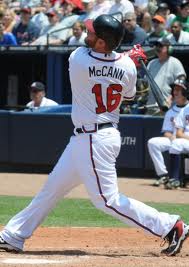 Why It Matters: Notice that the Yankees have committed nearly $240 million after having been rumored to be on a mission to avoid the $189 million threshold of the payroll luxury tax, while not having signed their All-Star second baseman, Robinson Cano, just yet. And, don’t forget, the team is rumored to be interested in signing Japanese right-hander Masahiro Tanaka, who could be had at a lesser amount after the posting fee was limited to a maximum $20 million bid on Wednesday. McCann is a huge upgrade over the combined .213/.289/.298 triple slash that Yankees’ catchers posted in 2013, while Ellsbury provides great defense and speed as the Yankees try to move on from all of the injuries that suffocated their success this past season. Even if the Yankees are done with the big name signings, including Cano, they should be a better team in 2014.
Why It Matters: Notice that the Yankees have committed nearly $240 million after having been rumored to be on a mission to avoid the $189 million threshold of the payroll luxury tax, while not having signed their All-Star second baseman, Robinson Cano, just yet. And, don’t forget, the team is rumored to be interested in signing Japanese right-hander Masahiro Tanaka, who could be had at a lesser amount after the posting fee was limited to a maximum $20 million bid on Wednesday. McCann is a huge upgrade over the combined .213/.289/.298 triple slash that Yankees’ catchers posted in 2013, while Ellsbury provides great defense and speed as the Yankees try to move on from all of the injuries that suffocated their success this past season. Even if the Yankees are done with the big name signings, including Cano, they should be a better team in 2014.
Twinkies Filled Their Rotation
Who Minnesota Signed: RHP Phil Hughes (three-year, $24 million); RHP Ricky Nolasco (four-year, $49 million);
Why It Matters: The Twins starting pitchers posted a 5.26 ERA and a 1.54 WHIP in 2013, worst in the majors, and the ERA was a whopping 0.45 points higher than the Toronto Blue Jays’ starters (4.81), who finished 29th. Hughes still has youth and potential, but he needs to start tapping into that potential after posting a horrific 5.19 ERA over 29 starts and 145.2 innings. Shockingly, Hughes’ numbers would have made him a solid number three starter for the Twins in 2013…they were that bad. Adding Nolasco was special, but he isn’t an ace. He will likely be the Twins’ Opening Day starter in 2014 by default and he should make the rotation slightly better; although, it couldn’t get much worse.
Kazmir Rejuvenates and Cashes In Athletically
Who Oakland Signed: LHP Scott Kazmir (two-year, $22 million)
Why It Matters: Signing Kazmir to a lucrative contract could lead to another movie about the Oakland A’s after the success of Moneyball. While Kazmir’s resurgence was quite surprising, an eight-figure deal, after making all of one total appearance in the majors in 2011 and 2012 due to severe shoulder woes, was even more surprising. Possessing a mid-90’s fastball and a left arm appears to be all that it took to find a big deal. Kazmir’s story is worthy of attention and praise, but it is a story that needs to be monitored to see if he can maintain the same success in Oakland over the next two seasons. His presence will allow the A’s and Beane to shop LHP Brett Anderson at the winter meetings next week, which could net the club some additional win-now resources.
The Tigers No Longer on the Prowl for a Closer
Who Detroit Signed: RHP Joe Nathan (two-year, $20 million)
Why It Matters: Detroit needed a lockdown closer after shuffling through Jose Valverde, Phil Coke, Jose Veras, and Bruce Rondon at closer before Joaquin Benoit took over and did a nice job over the rest of the season. They got their man after signing Joe Nathan away from the Texas Rangers. Nathan closed 80 games out the last two seasons, while posting a 2.09 ERA and 0.98 WHIP, and at 38 years of age, he doesn’t look to be slowing down after missing the 2010 season due to Tommy John surgery. After dealing Prince Fielder to improve at second base with Ian Kinsler, moving Miguel Cabrera back to first, and plugging Drew Smyly into the rotation (after dealing Fister), the Tigers will have a completely new look in 2014. With their strong rotation, Nathan’s shutdown ability makes them quite dangerous.
Fish Hook Their Catcher and the Red Sox Snag Another
Who Miami Signed: C Jarrod Saltalamacchia (three-year, $21 million)
Who Boston Signed: C A.J. Pierzynski (one-year, $8.25 million)
Why It Matters: With a lot of focus heading towards catcher defense and framing, highlighted by the Rays commitments to Jose Molina and Ryan Hanigan this winter, other clubs continue to look towards offensive-minded catchers, and the Miami Marlins and Boston Red Sox locked down their backstops this week. The Marlins seem to have very little hope for a quick turnaround and Saltalamacchia isn’t going to be the other piece to help Giancarlo Stanton and Miami to an NL East title, but it is a start…as long as they don’t trade him before the 2014 season starts. Pierzynski will be on his fifth organization and, despite being hated by some of his competition, he could be a tremendous asset to the character and chemistry that existed within the Boston World Series clubhouse. I guess he is better to have on your team than to play against him.
